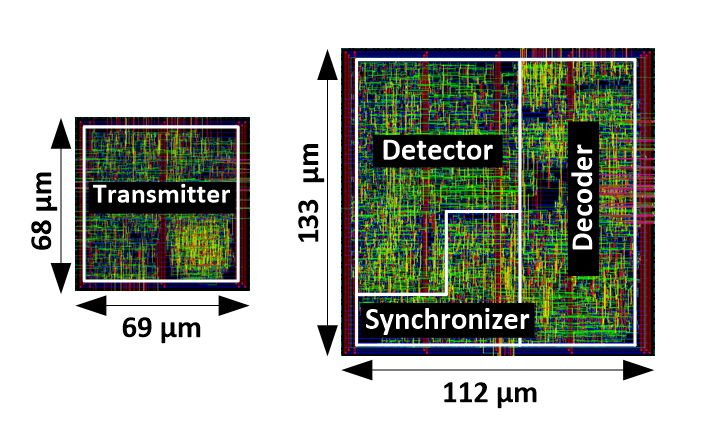A new type of wireless transceiver is on its way to making data transmitted by brain-computer interfaces more secure.
 Photo: Chip layouts of the secure CSR-UWB transmitter and receiver in a 32nm CMOS (Complementary Metal Oxide Semiconductor) technology.
Photo: Chip layouts of the secure CSR-UWB transmitter and receiver in a 32nm CMOS (Complementary Metal Oxide Semiconductor) technology.


 As a fourth-year PhD candidate in the University of Washington’s
As a fourth-year PhD candidate in the University of Washington’s